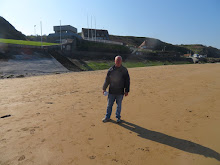On this day in 1941, the Japanese launched a sneak attack on the U.S. Pacific fleet at Pearl Harbor, decimating it, and plunged us into WW2. The U.S. brought the war to an end in 1945 by dropping two atomic bombs on Japan, forcing her to surrender. I am reading Hell to Pay by D.M. Giangreco, written in 2009 and updated this year, which lays out in sobering detail the U.S. plans to invade Japan in 1945 (Kyushu) and 1946 (Honshu). It also examines detailed Japanese plans for homeland defense.
U.S. casualties were estimated to be one million. Japanese casualties were estimated to be ten million. The book makes clear that Japan would not have given up without the shocking event of the two nuclear detonations, as it was a militarized nation of fanatical, committed people who were induced by their leaders and culture to fight to the death, as epitomized by their asymmetrical and effective use of kamikazes against American warships.
It would have been a bloody battle to the death for U.S. servicemen against soldiers, old men, women and young children, many armed with sharpened sticks. For instance, the Japanese civilians on Saipan famously leaped to their deaths off cliffs, carrying their children with them, rather than surrender to U.S. personnel who were beseeching them to give up in end-of-the-battle mopping up. The U.S. estimated it would lose 10% of its fleet to kamikazes in the invasion of Japan, figuring on Japan having 5,000 such planes. The Japanese actually had 12,000 planes hidden away, with ample supply of fuel for the purpose of one-way flights, and estimated they would destroy 20-50% of the U.S. fleet. They also had thousands of small, wooden motorboats ready for use in deadly nighttime suicidal attacks against U.S. ships, explosive-laden fast boats which, being wooden, would evade radar.
The book points out that after three years of war, Japan had "figured out" American tactics and invasion strategy and knew exactly which beaches the U.S. troops would storm ashore on and had been preparing to meet them in these final two battles for half a year or more. The Japanese deductions were 100% correct, on both islands, and the defenses were becoming more formidable by the day. They planned for massive kamikaze attacks on the fleet, opposition at the shoreline and a defense in depth, all the way up the large (compared to previous island battles) island. The kill-ratio of Japanese deaths to U.S. casualties had been dropping steadily as the war progressed from 5-1 to near equality. The opposing forces at or near the beachheads would have been at approximately a one-to-one ratio, not the preferred 3-1 ratio when launching an attack against heavily-defended positions. Civilians on both islands were being mustered into and trained in quasi-military brigades for use as cannon fodder, damage repair, road-building and even infiltration. To avoid the Americans' overwhelming superiority of firepower, especially from naval guns, the Japanese had several reserve divisions a day's travel by foot away from the battlefront, ready to appear at a disputed zone overnight.
Japan is a mountainous country with a rugged spine of mountains perfect for guerrilla warfare, which was being planned on if and when the battle went against the Japanese military forces. Japanese forces on previous island battlegrounds such as Guam successfully evaded U.S. forces for decades after the war, not knowing or believing that the war was over. Operations in Japan would likely have dragged on for years.
Japanese planning for homeland defense figured on using 100% of its population in the fight to the death. The Japanese supply lines were mere miles long, the U.S. supply lines stretched back thousands of miles with every single item having to arrive by ship. The Japanese even had some tanks on hand, and had modified an existing automatic hand-held weapon to be a deadly and effective tank-killer, overcoming a serious drawback they suffered from in other island battles, the inability to counter American tanks.
Consider how protracted, bloody and savage the battles of Iwo Jima and Okinawa had been, and multiply that horrendous experience ten-fold for U.S. forces thrust into the maelstrom. The U.S. planned on having five more nuclear bombs by the fall of 1945 when the first invasion forces went ashore on Kyushu in Operation Olympic, and planned to use them tactically at or near the beachheads. U.S. forces, with dangers unbeknownst yet in the nascent nuclear age, would have been fighting over radioactive ground!
My father was a Pacific war veteran who survived two horrific battles, Peleliu and Okinawa, where casualties ran one in three, and I have no doubt he would have been killed or maimed in participation in another all-out no-quarter asked for or given invasion. The author James Michener, a Pacific War veteran, has a letter in the appendix of Hell to Pay which lays out the feeling of indescribable relief such young men felt upon hearing that a super weapon had been used and the war was over and they would live!
Anyone who thinks that dropping the bomb on Japan in 1945 was obviously wrong, or that it was obviously racist (we used it on the only enemy we had left when its development was completed, as Germany had already surrendered, and the U.S. was in an almost desperate quandary as casualties mounted and more bloody fighting loomed because Japan would not surrender despite being beaten already and having its country totally devastated by conventional bombing), should read this book, become informed on the subject and think further on the matter.
Thursday, December 7, 2017
Subscribe to:
Post Comments (Atom)










No comments:
Post a Comment